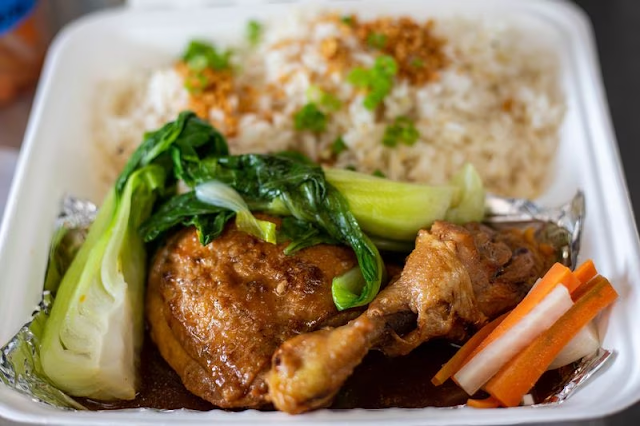Filipino adobo chicken: What does Google’s March 15 homepage mean?
It’s not uncommon for Google to have a Google Doodle in place of its regular blue, red, yellow and green lettering to represent a significant day in history on its homepage — but what does the March 15 image of two smiling children sniffing wafts of hot, well-seasoned chicken thighs have to do with the date?
Google is celebrating “Filipino Adobo” chicken in its Google Doodle because, after the word “adobo” was added to the Oxford English Dictionary in December 2006, it was also added to word list on the OED’s quarterly update on this day in 2007, the company said.
Filipino adobo chicken is a popular dish that originated from the Philippines and is “sometimes considered to be the unofficial national dish of the country,” according to some outlets. There are many variations and recipes on how to make adobo in multiple cultures, and Filipino adobo recipes also vary according to different parts of the Philippines, Google’s site explained.
Generally, adobo-style cooking requires the following: meat, seafood or vegetables braised into a stew, usually with vinegar, soy sauce, garlic, bay leaves and black pepper, and laid over a bed of rice. But for Filipino adobo, places like Visayas and Southern Luzon have their own regional styles — which depends on the available ingredients in the area.
Visayas locals make “adobong puti,” which “uses exclusively vinegar and no soy sauce,” and is considered by some “to be the original indigenous style of Filipino adobo.” For Southern Luzon, “creamier adobo with coconut milk is more popular,” Google’s site read.
The March 15 Google Doodle artist, Anthony Irwin, has a special compassion for cultural ties when it comes to food.
Irwin said, “For children of immigrants, our relationship with our parents’ food is a complex one. On one hand, my mother’s cooking made me feel like I was exactly where I was supposed to be. It felt special and safe and warm. But on the other hand, most kids just want to fit in. Growing up in the U.S., I didn’t want my food to be special. I didn’t want to feel different. I just wanted to be like everyone else.
As an adult, Irwin said he looks for ways to feel proud of his culture and heritage — pride he didn’t feel as a child. Filipino food creates that connection between his mother’s identity and his own.
“So I tried to capture that simple childhood joy of leaning in and savouring the kind of food that makes home feel like home. Kain nang mabuti!,” Irwin said.

